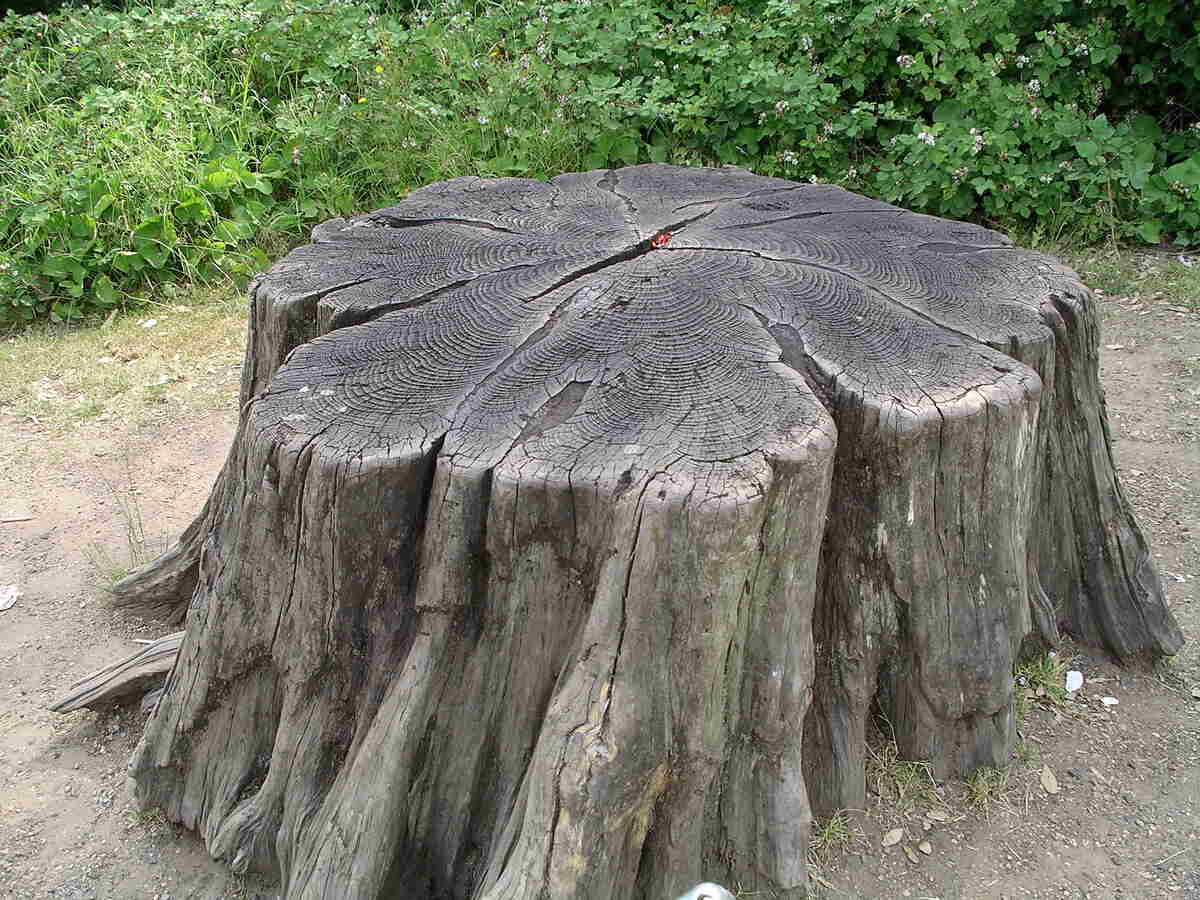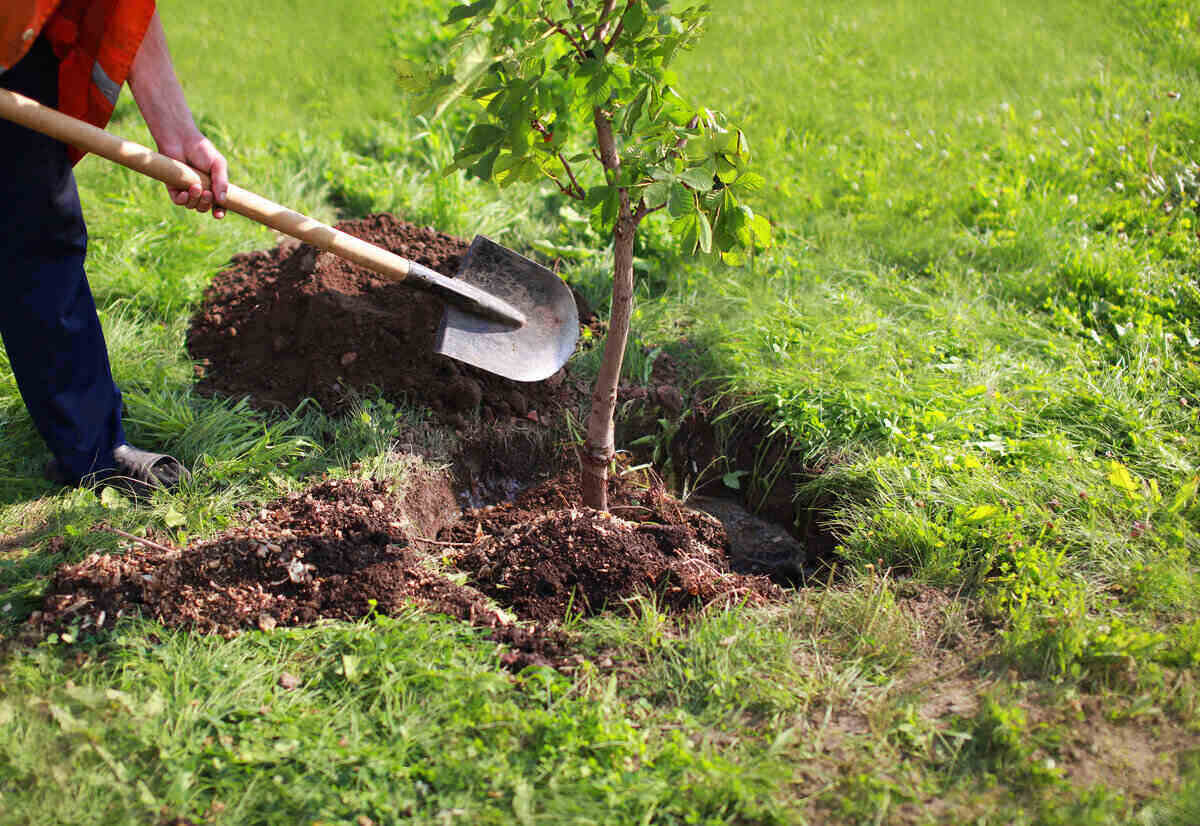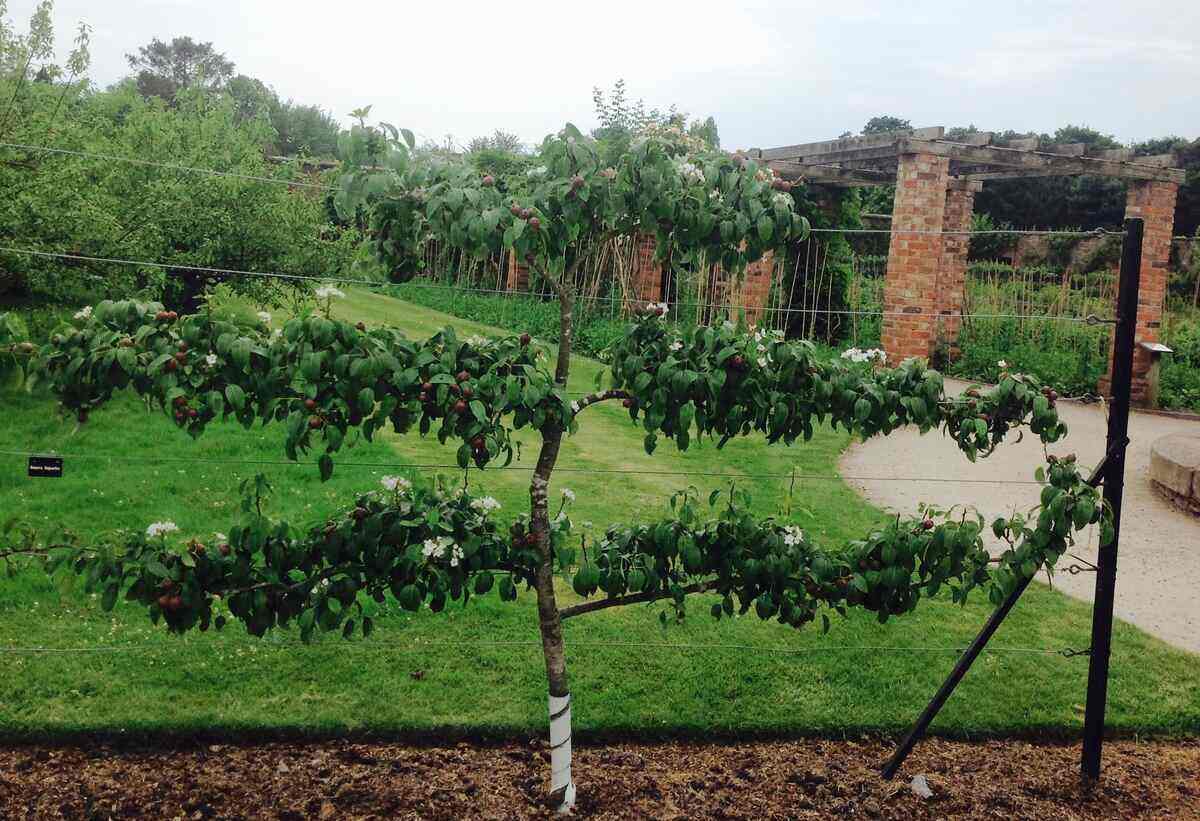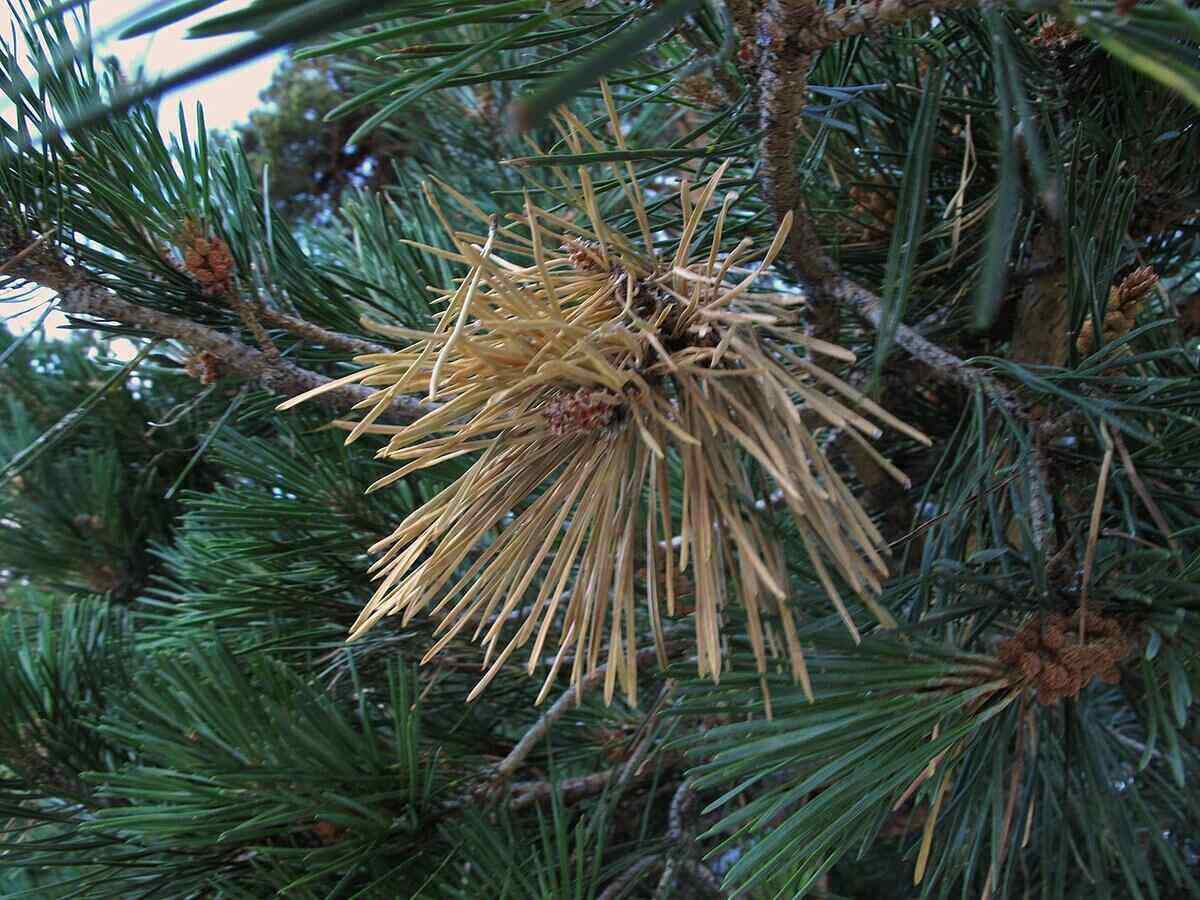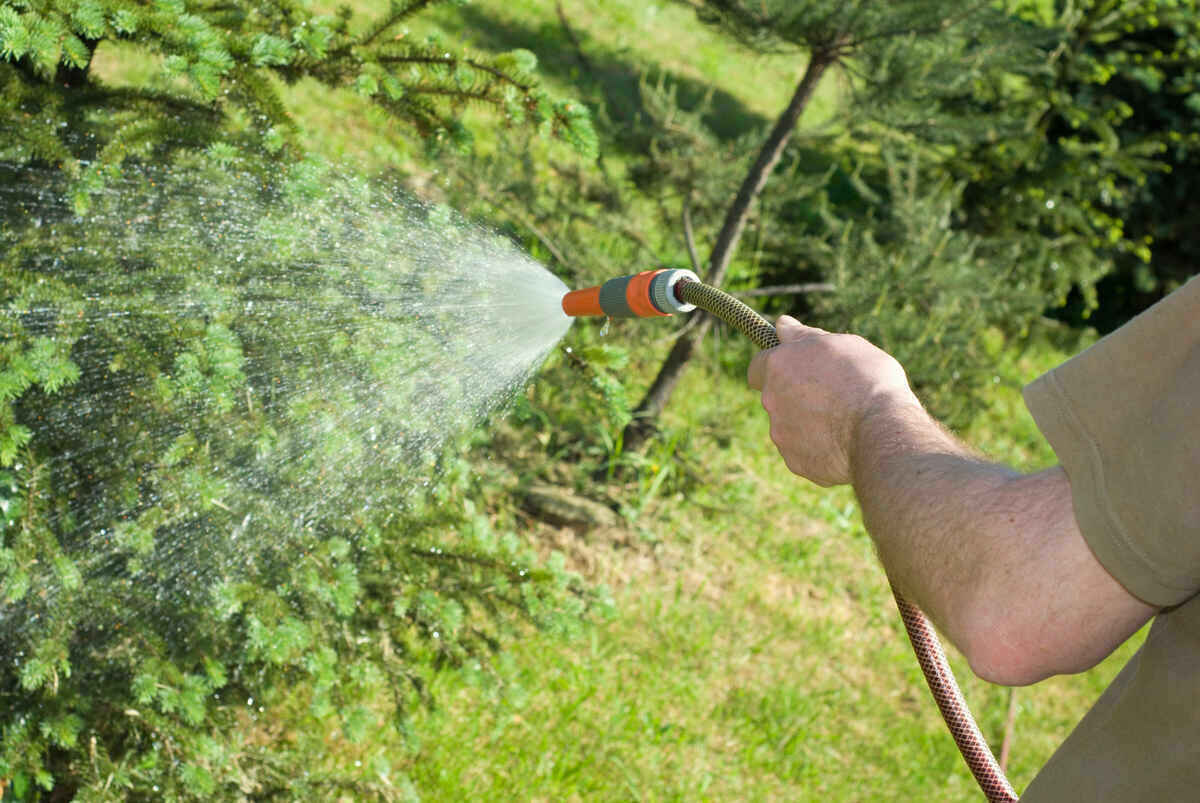
You don’t have to be a green thumb to know that trees need water to survive and thrive. While it’s crucial to water your trees if you want them to grow, that doesn’t mean you should do it haphazardly. If you know how much, how often, and how best to water your trees, you’re more likely to get excellent results – and your flora will have a long and happy life.
The most common mistake homeowners make when growing trees is not the lack of watering but using the wrong method. Just as each of us has our own preferences when it comes to our eating habits, so do trees. Some people are allergic to peanuts, while others require more potassium in their system. If you approach tree care in this manner, you’re on your way to becoming a responsible tree owner.
When Do You Water?
Water to trees is like food to humans. Regardless of race and age, when it comes to how often we eat, there’s always breakfast, lunch, and dinner (unless you’re following a specific diet). It’s basically the same thing for trees.
Regardless of the tree species, there are best practices to follow when it comes to watering. Whether you’re watering an old or new tree, here are some ground rules you should follow:
Water Trees in the Morning
Following the analogy about food, breakfast is also the most important meal of the day for your trees. Watering them in the morning prepares them for the heat they must endure throughout the day, especially during the hot summer months.
In the early morning, the soil is still cool, so water absorption is faster and seeps deeply into the root zone. Consequently, it is also the most efficient way to water trees. In the afternoon you waste gallons of water to evaporation.
Evening hydration is also discouraged since water usually ends up resting in the soil instead of being absorbed. As a result, it creates a damp and moist environment for insects to proliferate and fungi to grow.
Consider the Age of the Trees
Determining the age of a tree is as simple as knowing how long its lifespan is and how long it has been living in your yard. The younger and newly-planted trees require more frequent watering since they are still in their growing phase. In order for them to grow into healthy trees, their roots still need to dig deep and strengthen themselves. And water is what makes this possible.
On the other hand, mature trees don’t need water as often since their root system is already established. Instead of hydrating them once daily, the rule of thumb is to water them every few days, but with a larger amount of water.
Adjust to Environmental Conditions
Growing seasons and climate transitions are not the only things you should look out for. Even temperature and weather changes throughout the day can affect your trees. Temperature naturally gets higher as the sun continues to reach its peak with no cloud cover. It will make the soil dry, evaporating the water you’ve given in the morning.
Changes in the weather go both ways, so you need to adjust for rain as well. You don’t want to add more water when nature has already done so. The best way to do this is with the use of a nifty little tool known as a rain gauge. Depending on your plant’s water requirement, you can easily check with a rain gauge how much water you need to add after the downpour or if you still need to. If you have an irrigation system in place, it’s best to turn it off when nature is watering your plants.
While the weather forecast can help you prepare your trees ahead of time, you should also pay attention to the soil condition. If you find the soil drier than it usually is and the plant looks dehydrated, you need to add more water. In general, the ideal soil type is always moist and well-drained.
However, keep in mind that not every soil handles water the same way, as it all boils down to soil type. For instance, watering sandy soil can be quite challenging as it just allows water to pass through the root system quickly. Clay, on the other hand, is the densest type of soil that can hold both water and nutrients better for the root to absorb.
Water Outdoor Container Trees At Least Once Daily
Trees and other plants residing in container boxes or pots require extra care, even if they usually sit outside. Compared to the soil in a flower bed or garden plot, the ones in container gardens can dry out pretty fast.
So once you notice the temperature climbing to 90 degrees and above at midday, take it as a signal that you need to give your trees their afternoon soak. Do you live in a city where it’s mostly hot and humid, especially during summer? You can set up an automatic plant waterer, so you don’t have to be bothered about it all the time. It slowly seeps water into the soil, keeping it moist for your tree.
Consider the Tree Species
The wide range of tree and plant varieties offers diversity – not just in aesthetics but also in tending them. Some plants require more water than others, while some need to be sitting directly under the sun and others thrive when they are constantly under shade. So when thinking about the specific details as to when to water your plants exactly, it’s important to look back at where they naturally came from. We’re not talking about the nursery where you bought them but their natural habitat.
For instance, succulents are pretty common these days because they don’t require a lot of watering. This is because these plants are native to the desert region, where it’s normal for them to thrive even with less water. On the other hand, plants from tropical areas are more accustomed to frequent rain showers.
So if you have a Monstera plant at home that is native to tropical forests, it will need watering more often compared to your succulent plants.
How Much Do You Water?
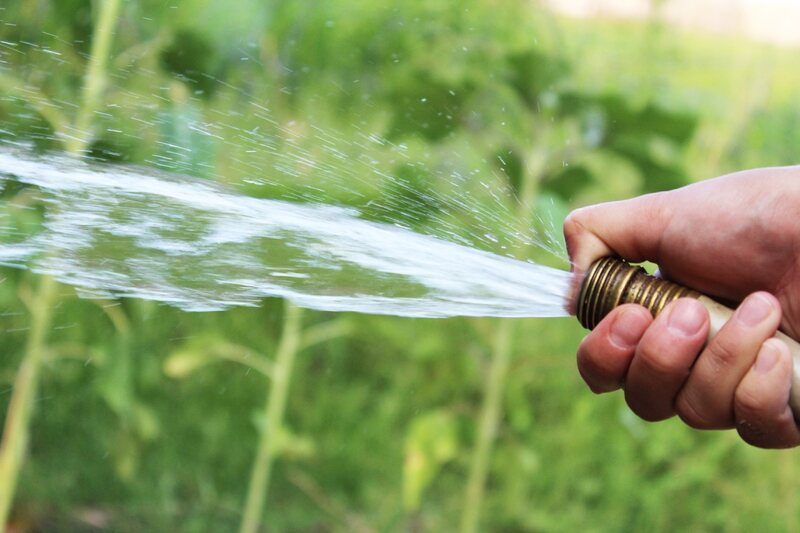
The principle that moderation is key to life doesn’t only apply to humans but to everything that lives, including plants and trees. For example, constantly overeating can lead to health complications like diabetes. In the plant world, having too much water is just as bad as having too little.
Here are some best practices to keep in mind so that you don’t end up overwatering your trees:
Tree Size Determines the Amount
The size of a tree is a great indication of how much water it needs. As such, it’s never a good idea to hydrate the same amount just because the trees are of the same type. If you have three red chestnut trees, you need to consider their sizes and give the one with the biggest trunk diameter the most amount of water.
Consider the Type of Root System
Some trees, like willows, typically don’t have a deep root system. Since the root growth doesn’t dig deeper, it only has access to the shallow part of the soil, where water evaporation is faster. Of course, you wouldn’t want to keep checking the soil moisture every now and then in this situation. That’s why you need to set up a drip irrigation system for these types of trees. Similar to an automatic plant waterer mentioned earlier, this irrigation system will slowly release water into the soil over time.
Avoid Broadcast Sprinklers
While a home sprinkler system is suitable for keeping your grass green, it’s not a good idea to rely on this for all your plants and trees. It will not only soak the plant’s leaves which can encourage fungal growth and insect infestations, but it can also evaporate quickly on a hot, windy day. Even if you’re watering with the right amount, if you’re not pouring it into the soil, you’re making it hard for your plant to get hydrated.
Check the Soil
The term “watering the plant” is not really an accurate description because, in reality, you’re watering the soil and not the plant itself. For potted plants and container trees, the rule of thumb is for the amount of water to be around 1/4 to 1/2 of the pot’s volume. Of course, not everyone knows how to keep up with these measurements. So when in doubt, check if the soil is moist enough.
What is the Best Way to Water?
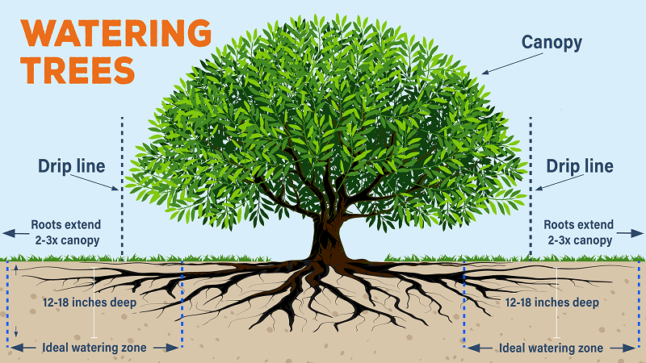
You already know by now that plants have varying requirements and watering restrictions. And frankly speaking, it could be quite tedious the more types of plants you need to take care of in your yard. Not only do you need to consider the type of plant, but you also need to check on the humidity and other weather conditions.
But is there something like a golden rule to follow regardless of these factors? Fortunately, there is, as mentioned in the previous section. It’s about checking the moisture level in your soil.
Moisture Check
Normally, it’s quite easy to see if the soil is damp. But what if it’s dry and windy? Visual inspection doesn’t usually reveal the actual moisture in this case since the surface of the soil can get dry easily. What you need is to use a wooden dowel or a barbeque stick to check if the ground beneath is still moist. Insert it into the soil around 3 to 4 inches deep. If it comes out clean after pulling the stick out, then that means your soil is dry, and it’s time to water. You also can use your hands to check the moisture.
If you’re into gadgets, you can use a moisture meter to test the soil’s dampness. However, this can be pretty expensive.
Let’s say that the soil is dry and your plants need watering. Here are some tips that can help guarantee you’re using the best approach to water them.
Tip #1: Don’t Use a Jet-Type Spray Nozzle
Some trees are soft and tender, so using a pressurized nozzle can damage them. Even if you don’t spray them directly on the plant, the water can still disturb the soil. A watering wand is your best implement, but if you don’t have one and still prefer to use a garden hose, you can still do so. Just remember to remove the nozzle and adjust the amount of water.
Tip #2: Always Use Room-Temperature Water
Thinking of giving your plants cold water because it’s hot outside? How about hot water because it’s too cold? Don’t do it. Water that’s either too hot or cold can shock your plant’s root system. Instead, use room-temperature water – between 60 to 70 degrees – to encourage root efficiency and oxygen uptake.
Tip #3: Ensure Even Distribution of Water
As you water, pour it evenly around the tree’s roots. If you water one side more than the other, it can impact the plant’s growth, encouraging it to grow only on that side. The secret to a full and lush plant or tree is even watering.
Tip #4: Don’t Ignore Your Plant’s Messages
While we try our best to water plants properly, it’s quite normal to end up overwatering them. Overwatering is like spoiling a child. Fortunately, our plants speak to us by giving us signs of having too much water, such as yellow leaves or leaves that are soft and squishy. If you want to show more love to your plant, you can always give it more light instead of water.
How Do You Water Trees?
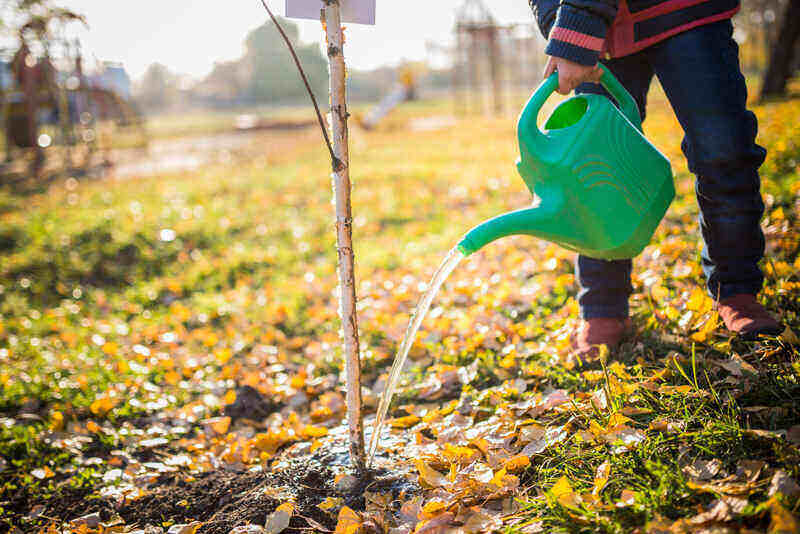
Watering a tree is quite different from watering lawns, potted plants, succulents, and blooms. In this section, you’ll discover how you can water these gentle giants.
Newly Planted Trees
These baby trees need more TLC than the older ones as they need nourishment so they can quickly grow their root system.
You must do this every four to five days in the first couple of weeks. Aside from applying water directly to the location of the root ball, you also need to keep the backfill soil moist. Doing so will help encourage the roots to expand.
Young Trees
After 12 weeks, your tree now has a considerably bigger tree trunk and is already considered young. Young trees still require regular watering, but not as often as when they were newly planted. You can do this every couple of weeks for at least two years. Keep in mind that in dry weather, you’ll have to do this more often.
Mature Trees
Even with their roots already spread out and already grown deep, mature trees still need enough water, especially during dry seasons or droughts. However, you shouldn’t rely on lawn sprinklers to provide adequate water to your tree since it won’t seep deep into the soil.
The three recommended setups would be:
- Soaker hose
- Drip tubing or emitters
- Hose sprinkler in a low setting
Your local arborist can best help you if you want to get this installed.
How to Tell if a Tree Needs Water?
You can use the same techniques as potted plants to check if your tree needs water – check the soil moisture.
- Using a screwdriver or your fingers, dig through the soil and feel it. If it feels dry underneath or dirt doesn’t stick to the screwdriver, then it’s time to water.
- You can also get a pinch of soil and check if they stick together. If not, then you need to hydrate your tree.
Your tree also gives tell-tale signs that they need more water, such as wilted and drooping leaves. A more advanced sign of dehydration includes the browning of leaves or curling on the edges. New leaves may also appear smaller than usual.
What Do You Do During Periods of Extreme Weather Conditions?
With most plants and trees being sensitive to weather conditions, it’s crucial to understand what needs to be done if the weather goes awry.
Little Rain or Drought
When taking care of plants, especially those located outdoors, never rely on rain. In periods of hot, dry spells, trees would naturally have increased water needs unless they are drought-tolerant. You can use a rain gauge in your garden to determine the amount of rainfall you’re getting every week and add supplemental water accordingly. Remember, the key here is checking the soil moisture level.
Covering the soil with a layer of mulch can also help retain soil moisture. You can use organic mulch like wood chips as they will decompose naturally and even make the soil healthier. But if you are experiencing prolonged drought, you can check our in-depth guide on taking care of trees during drought for more deep watering techniques and other crucial information.
Rainy or Hurricane Season
During the wet season, your goal is to protect your plants from overwatering. As such, you need to check your drainage system. If you can bring small trees or plants inside the house, that would be best so you can shelter them from both wind and water. For those which you cannot transfer indoors, you can cover them temporarily with a water-resistant tarp.
What are the Signs Your Tree is Getting Too Little or Too Much Water?
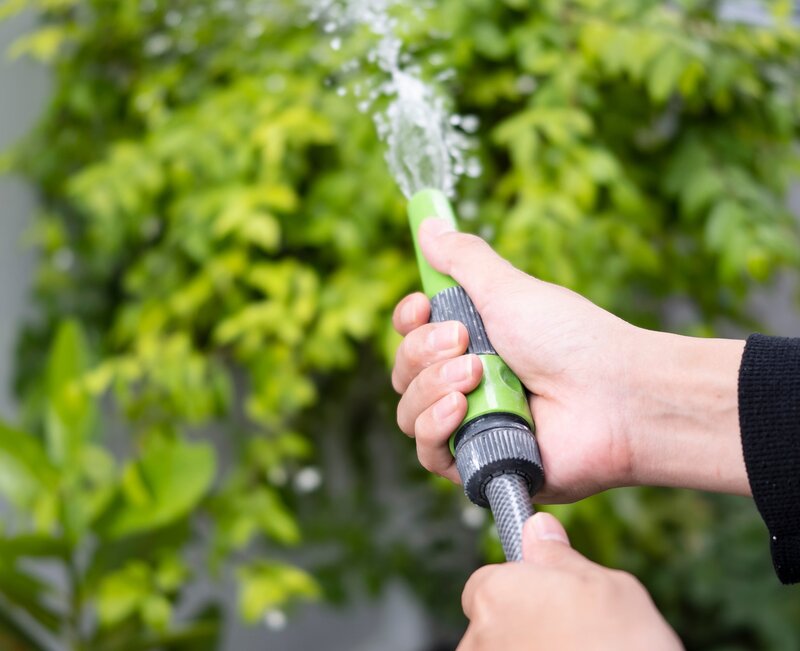
Just like other types of plants, your tree can also send you a message if they’re thirsty or need less water. Here are some of the signs that you’ve underwatered your tree:
- Leaf edges that are colored brown
- Wilting or curling leaves
- Canopy with leaves that are few and far in between
- Undersized leaves and early leaf dropping
Below are the indications that you have overwatered your tree:
- The new growth withers or starts to turn yellow before it has grown fully
- Extremely fragile leaves, regardless if they have a vibrant color
- The soil surrounding the tree is always wet
Taking care of plants is a huge balancing act. It’s always better to be proactive by testing the soil conditions. You also should be sensitive to changes in weather conditions. It’s better than having to wait for your plants to show signs of either malnutrition or overwatering.
FAQ About How to Water a Tree
Yes. Trees can also drown when there’s too much water in the soil as the oxygen-rich air pockets are flooded. Aside from starving the rest of the tree, overwatering can also lead to root rot and create an environment for fungal growth.
Once you’ve discovered that your tree is getting too much water, there are several ways to fix it. One is to reduce the water supply. If you have no control over this, you can always relocate or transplant your tree to a more favorable location. You also can amend the soil or try aerating the roots.
If you find your tree in dire need of water, you can always add more but be careful not to drown it. For best results, you can approach this with a slow watering method using a drip hose. You can make this even more effective by digging 24-inches deep holes around the tree’s canopy and filling them with sandy soil.
Take Good Care of Your Plants the Right Way
The watering restrictions and other essential information you’ve discovered here can help ensure your trees’ long and healthy life. While following a set schedule is good, it’s also crucial for you to adjust appropriately depending on external conditions. Most importantly, always feel the soil and decide from there if your plant or tree is thirsty or not. Need help maintaining your trees? Place a call to a tree care expert in your area today and secure a great future for your greeneries.
Main Image Credit: abbesses / Canva Pro / License
